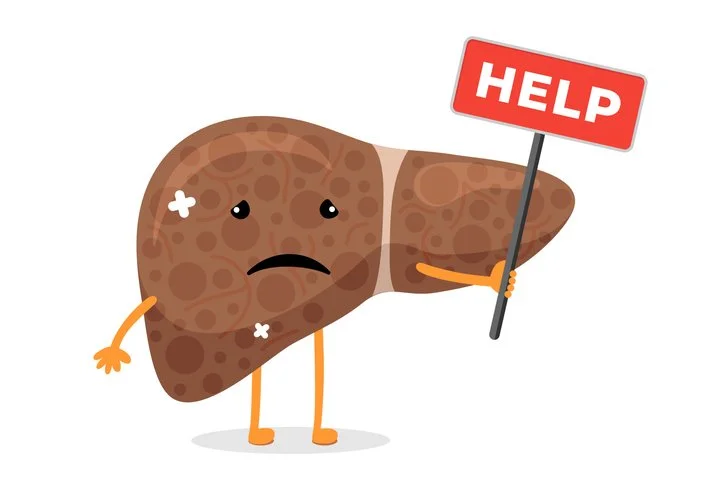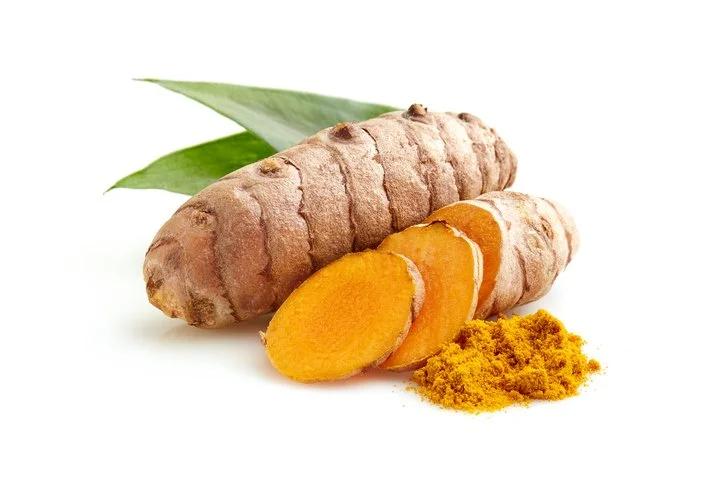Turmeric & Liver Damage: The Katie Mohan Case Explained
By: Joy Stephenson-Laws, Holistic Coach, J.D., Founder
Katie Mohan, a 57-year-old Bar Method instructor from New Jersey, was hospitalized with severe drug-induced liver injury caused by turmeric supplements. She began taking Youtheory Turmeric (purchased at Costco) in mid-March to help with joint pain from a prior broken wrist and ganglion cyst - injuries aggravated by 15 years of teaching Bar Method classes.
Following the bottle's recommended dosage, she took 3 tablets daily (2,250 mg total with black pepper extract). After less than two months, she developed severe symptoms including jaundice, extreme fatigue, and dark urine. Her liver enzymes were dangerously elevated - ALT levels were 130 times higher than normal, reaching over 2,000.
She was hospitalized for several days and transferred to NYU's liver transplant unit when doctors feared liver failure. Fortunately, her liver began recovering without needing a transplant. Doctors confirmed the turmeric supplement had "essentially poisoned" her liver.
But how did a spice with a halo turn into a hospital bill? Let’s follow the yellow crumbs.
Why Too Much Turmeric Can Hurt You
Turmeric owes its glow—and its hype—to curcumin, a molecule that switches off inflammation pathways the way a lawyer says objection. Yet power comes with a price tag called dose. The World Health Organization pegs long‑term safety at 0–3 mg per kilogram—about 200 mg for Katie. (World Health Organization & Food and Agriculture Organization, n.d.) She was downing more than ten times that. (For perspective, even a generous curry might contain about 150 mg of curcumin—Katie was taking fifteen curries’ worth before breakfast).
Her capsules smuggled in a booster: piperine, the bite in black pepper. Just 20 mg of piperine can rocket curcumin absorption twenty‑fold. Great for marketing copy; rough on a liver already juggling 500 chemical chores a minute.
Clinicians are taking notes. Herbal products now drive roughly one‑fifth of U.S. drug‑induced liver injuries. (National Institute of Diabetes and Digestive and Kidney Diseases, 2024) That's a steep climb since the early 2000s.
In short: turmeric is medicine masquerading as seasoning. When you crank the dial past kitchen‑sprinkle, biology fights back.
Inside the Crisis: Three Cascading Blows
Think of the liver as Grand Central Station. Hormones, toxins, and nutrients all change trains there. Katie’s mega‑dose sparked a three‑train pile‑up:
The Flood. Food never ships curcumin by the gram, so her bloodstream suddenly ran thick with pigment.
The Traffic Jam. Enzymes that normally clear Tylenol and statins were gridlocked by curcumin back‑orders.
The Friendly‑Fire Alert. In some people, half‑processed curcumin sticks to proteins, tricking immune guards into attacking the very cells they patrol.
No virus, no bacteria—just chemistry in revolt. Once the flood receded, the liver did what only livers can: regenerate.
Yet before it screams, the body whispers. Let’s decode those murmurs.
When the Body Says “Enough”
A sudden afternoon crash, food that tastes off, tea‑colored urine, or an itch with no rash can all spell trouble. Doctors cite six headliners—fatigue, nausea, dark urine, pale stools, jaundice, and a right‑side ache—but any one can be the first flicker of red. Hear the whisper early, pull the plug, and the liver forgives.
Once her lab numbers calmed, Katie faced a tougher puzzle—how to keep pain at bay without courting another yellow scare. That’s where a smarter plan began. Ignore it, and the transplant list starts printing your name.
Mindset Pivot — From Fear to Respect (Illustrative)
The next scene is a picture of what smart follow‑up can look like; it’s not Katie’s actual chart.
A month post‑hospital, her wrists still ached, and a blanket ban on supplements felt shaky. In her doctor’s office, a pie chart sketched a new philosophy: food, movement, sleep, and stress skills claimed most of the circle; supplements got a slender slice.
“Capsules are power tools,” the doctor said. “They hang a picture—or punch a hole in the pipe.” Together they built guardrails:
Start with flavor‑size turmeric—half a teaspoon in oatmeal—and pair it with stretches.
If pain lingers, try a 500 mg curcumin capsule for eight weeks, then pause.
Buy only jars stamped USP, NSF, or ConsumerLab.
Pencil a stop date on the bottle and schedule a liver panel like a dental cleaning.
Her new mantra: “Food first. Evidence second. Megadose never.”
Weaving Safety into the Weekend
Picture Saturday morning. Almond milk warms on the stove. Fresh turmeric root and coconut oil swirl into a marigold latte, cinnamon masking the bite. By evening, wrists feel looser. On tough deposition weeks, one 500 mg capsule rides shotgun at lunch—never breakfast—and lands in a tracking app. Pain scores drift from six to three, labs stay boring (the best kind of lab), and Katie keeps typing without another yellow scare.
Nature Prefers Symphony, Not Solo
Indian kitchens pair turmeric with cumin and fat for a reason: plants evolve in communities. Modern wellness often plucks one molecule, cranks it to eleven, and brags about “bio‑enhancement.” Biology, however, is a fan of harmony.
Researchers are circling back. Early studies suggest modest blends—curcumin with quercetin, resveratrol with sulforaphane—may calm inflammation better than any solo megastar while sparing the liver’s inbox.
What the Science Shows So Far
Evidence stacks higher every year. A 2024 Brown Hospital Medicine case report used a liver biopsy to prove turmeric pills can bruise a liver—and showed the bruises fade once the capsules stop. (Shrestha et al., 2024)
A ten‑year sweep in LiverTox found herbal products now cause about 20 % of U.S. liver‑injury cases (National Institute of Diabetes and Digestive and Kidney Diseases, 2024). Because supplement laws are loose, users and clinicians have to double‑check safety.
Your Personal Plan to Avoid Turmeric Supplement Liver Damage
Imagine two farmers’‑market stalls. One sells knobby roots that stain your fingertips orange. The other hawks capsules yelling “2,000 % absorption.”
Reach for the root first. If ache persists, circle back to the capsules—but only after you:
Verify a lab seal,
Make sure no medicines clash,
Write a stop date on the bottle, and
Mark a liver test on the calendar.
Not abstinence, not blind faith—partnership.
Bringing It Home
Katie’s scare doesn’t damn turmeric; it damns concentration without context. Green‑tea extract, kava, even vitamins can flip from helper to hazard when dose outruns design.
So color your rice, latte, or veggies golden. If pain still nags, sit with a pro. Set a goal, choose a tested product, plan lab check‑ins. Remember: your liver quietly runs 500 jobs a minute. The best thank‑you gift is a workload it can handle.
References
People Staff. (2025, July 12). [Exact title of article about Katie Mohan’s turmeric supplement liver injury]. People. https://people.com
World Health Organization & Food and Agriculture Organization. (n.d.). Curcumin (JECFA Monograph). Joint FAO/WHO Expert Committee on Food Additives.
Shrestha, N., & colleagues. (2024). Turmeric‑induced liver injury: A case report. Journal of Brown Hospital Medicine, 5(4), 41‑45.
National Institute of Diabetes and Digestive and Kidney Diseases. (2024). LiverTox: Herbal and dietary supplement–induced liver injury. National Institutes of Health.






